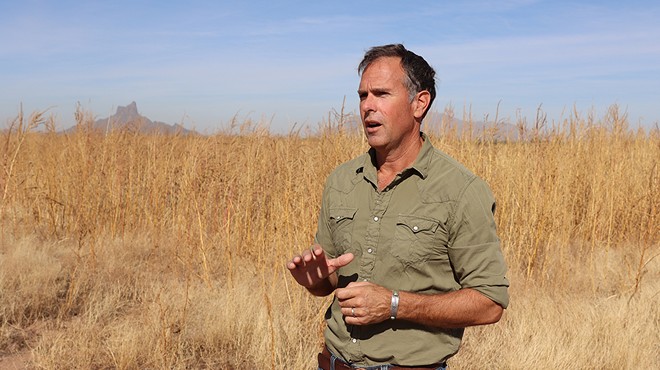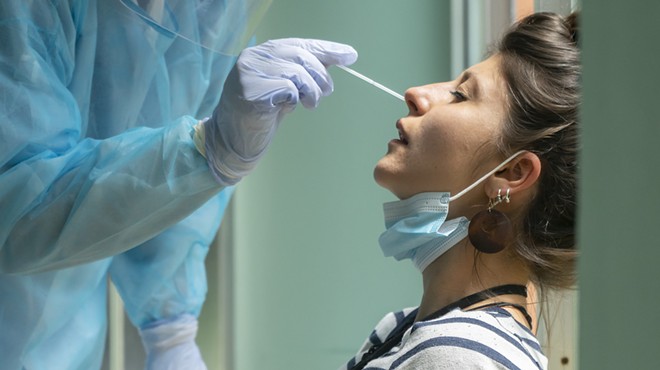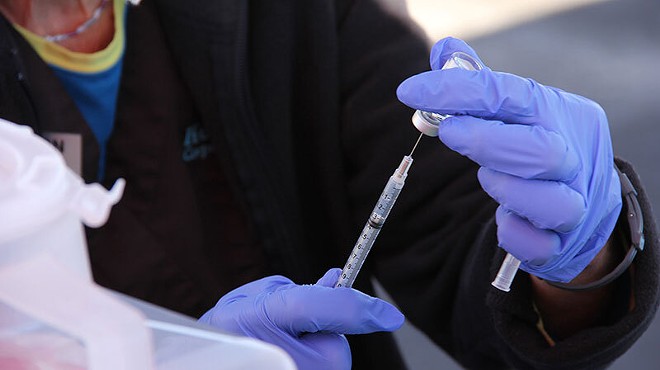Monday, December 12, 2016
Space Spending: A Look at the UA's Investment in Studying the Skies
The UA is renowned worldwide for its efforts in space exploration—with involvement in multiple satellite launches, observatories, and projects with NASA, the school is a crucial arm of space exploration in the United States.
However, it comes at a cost.
“We had a little over $600 million in research expenditures, which placed us thirty-third in the country,” said Timothy Swindle, the director and department head at the Lunar and Planetary Lab, speaking of the last fiscal year.
$120 million of that fell under astronomy, as classified by the National Science Foundation.
As far as physical sciences go—physics, chemistry, geology, astronomy, and planetary sciences—the UA ranked third in funding, Swindle said, totaling almost $165 million.
In terms of spending, the University of California Berkeley, which was second to Arizona in astronomy funding, spent “a little more than half of what UA did,” Swindle said. “The nation’s universities as a whole spent $567 million.”
Of that total, more than twenty percent was spent at the UA.
“There are only two schools, that being Cal Tech and Johns Hopkins, that spent more on physical sciences total than we did on this category that NSF calls astronomy,” he said.
The UA, however, still spends more than any Ivy League school on astronomy, making it a major hotbed for the science. But those tens of millions of dollars must come from somewhere.
“Certainly, all the money for the space program projects comes from NASA,” said Buell Jannuzi, head of the department of Astronomy at the UA. Christine Hoekenga, a social media lead for the OSIRIS-REx mission said the mission cost $805 million, every penny of which came from NASA. The total did not include the rocket the spacecraft was launched on.
However, with the number of critical space exploration efforts the UA is involved in, the money is being spent wisely.
Much of the astronomy department’s efforts involve mirror telescopes, which are located on Mount Graham and Mount Hopkins. The UA is involved in the construction of the Giant Magellan Telescope, scheduled to be completed in 2025.
Being built at Chile's Las Campanas Observatory the project aims to answer several critical questions about the universe, such as how the first galaxies formed, what materials make up the universe, and ultimately, what the fate of the universe may be, according to the Giant Magellan Telescope website.
The construction of the telescope involves planning and cooperation with many other universities around the world, Jannuzi said. “We’re partnered with many other groups, including the University of Chicago, Harvard, the Carnegie Institution in Washington… in the partnership to build the Giant Magellan Telescope,” he said.
Jannuzi said that the UA also built the main imaging camera on the James Webb Space Telescope. Set to launch in October 2018, it will be replacing the aging Hubble Telescope, which has provided crucial insight into our galaxy and beyond.
“JWST will be the premier observatory of the next decade, serving thousands of astronomers worldwide,” the projects website says. “It will study every phase in the history of our universe, ranging from the first luminous glows after the Big Bang, to the formation of solar systems capable of supporting life on planets like Earth, to the evolution of our own solar system.”
“It’s one of the biggest projects ever done by the university,” Jannuzi said.
Marcia J. Rieke, the principal investigator for the James Webb project at the UAa, along with her team, spent over a decade on the camera before delivering it to NASA.
“It’ll be the largest telescope in space” Jannuzi said. UA faculty also helped build cameras for the Hubble Space Telescope and the Spitzer Space Telescope.
The OSIRIS-REx mission, the most recent space launch the UA was a part of, captivated the imagination of Southern Arizona, as the school eagerly counted down to the launch. It was a testament to the UA’s space and engineering prowess, and yet another feat to add to its long list of space exploration efforts.
Heading to the asteroid Bennu, it will extend an arm to the surface, collecting a small sample of dust, and will return to earth with it in 2023. According to John Kidd, the Senior Science Operations Planning Engineer for OSIRIS-REx, the project has been in play for 16 years.
“What is now called OSIRIS-REx was first proposed by the UA in 2000 as an asteroid rendezvous mission,” Kidd said in an e-mail. “At this point in time, the mission was a partnership of the UA and Lockheed Martin.”
Originally just called OSIRIS, it was proposed twice to NASA before becoming a “New Frontiers” class mission. The New Frontiers program aims to explore the solar system with “frequent, medium-class spacecraft missions,” the program's website says.
OSIRIS-REx is poised to answer many important questions about asteroids that remain unexplored. According to Kidd, aside from returning a sample from Bennu, it will be mapping the chemistry and mineralogy of the asteroid, documenting the sample’s texture and morphology, and also measuring the Yarkovsky effect on Bennu—that is, the rate at which an asteroid speeds up or slows down from absorbing the sun’s protons.
“OSIRIS-REx is only the latest in a long line of space exploration activities that the University of Arizona has participated in,” Kidd said.










